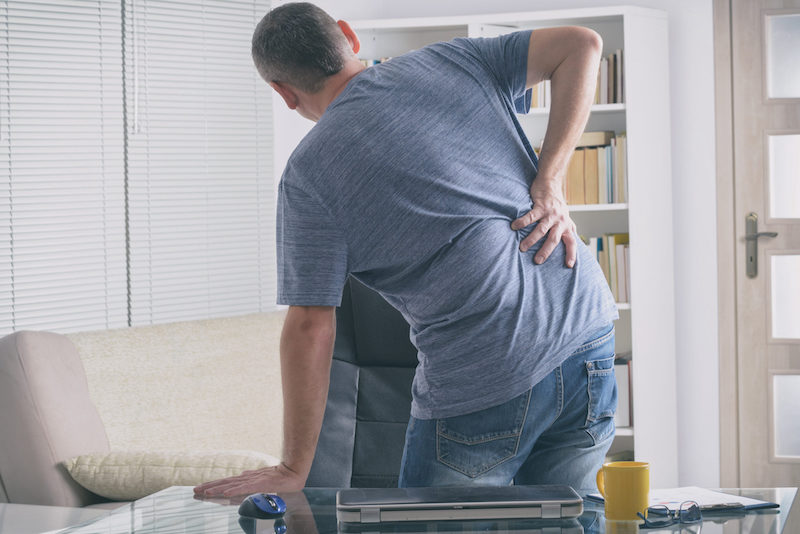How to Know When Back Pain is Muscular

September 14, 2021
If you’ve ever suffered from aches and pains in your back, you’re not alone: According to the American Association of Neurological Surgeons, 75 to 85 percent of Americans experience back pain at some point in their lives.
But knowing what’s causing your pain can be challenging. “The most common complaint is what we characterize as non-specific low back pain, which means we haven’t identified a specific underlying source for why that individual has back pain,” says Craig Van Dien, M.D., a sports medicine and physical medicine and rehabilitation physician at JFK Johnson Rehabilitation Institute. “In most cases, this is muscle-based pain or a muscle strain.”
What Are the Causes of Back Pain?
A muscle strain or pulled muscle is a common cause of back pain and happens when you injure the tendon or ligaments by overusing or misusing your back muscles.
Anyone can pull a muscle. Factors that can contribute to the problem include:
- Aging
- Lack of exercise or not warming up before exercising
- Excess body weight
- Bad posture
- Sitting for long periods of time
Certain health conditions can also cause back pain, including:
- A herniated disc that may be pressing on nerves
- Degenerative Disc Disease
- Osteoarthritis
- Osteoporosis
- Autoimmune and inflammatory diseases
- Osteoporosis or osteoarthritis
- Pancreatitis or kidney stones
- Infections and cancer, in rare cases
Back Pain Symptoms
If you’ve strained a back muscle, you may experience a dull pain and stiffness in your back, with an overall feeling of aches and pains. Symptoms include:
- Pain that gets worse when you move, especially when bending or stretching
- Difficulty standing up straight
- Swelling or bruising in a specific area
- Sharp or achy pain, usually limited to the lower back and buttocks area
- Spasm-like pain or cramps
To identify the cause of back pain, Dr. Van Dien says that looking at the absence of symptoms can also be helpful. “When patients come in with back pain, and the pain is of muscular origin, generally that exam is void of any sort of findings that would suggest that there’s a nerve-based problem or something more significant going on,” he explains.
Symptoms that suggest a more serious condition include:
- Fever, chills or night sweats
- Unexplained weight loss
- New bowel or bladder problems
- Pain that spreads down the legs
- Pain that lasts more than a few weeks
- Severe pain unrelieved by rest
- Weakness, numbness or tingling in one or both legs
If you are experiencing any of those symptoms, it’s best to get checked out by a doctor as soon as possible. “We don’t want you to ignore these symptoms. It’s extremely important to have a doctor evaluate you and rule out anything more serious,” says Dr. Van Dien.
How to Treat a Pulled Muscle
Prevention should always be the primary goal:
- Maintain strong abdominal and back core muscles to help stabilize your spine and prevent strain on back muscles.
- Live a healthy lifestyle, including weight management and low-impact aerobic exercises, to build muscle strength and prevent strain.
- Maintain a neutral posture when sitting or standing.
- Utilize leg muscles instead of back muscles when lifting objects to prevent back muscle fatigue and injury.
“Muscular back pain usually goes away after several weeks of home care,” says Dr. Van Dien. “Despite the popular belief that you must rest, early mobilization and walking following an acute back strain will help keep muscles loose and prevent further lower back tightness. Over-the-counter anti-inflammatory medication and alternating ice and heat can be helpful with the initial onset of pain. Your doctor may also recommend a course of physical therapy.”
Next Steps & Resources:
- Meet our source: Craig Van Dien, M.D.
- To make an appointment with a doctor near you, call 800-822-8905 or visit our website.
The material provided through HealthU is intended to be used as general information only and should not replace the advice of your physician. Always consult your physician for individual care.






